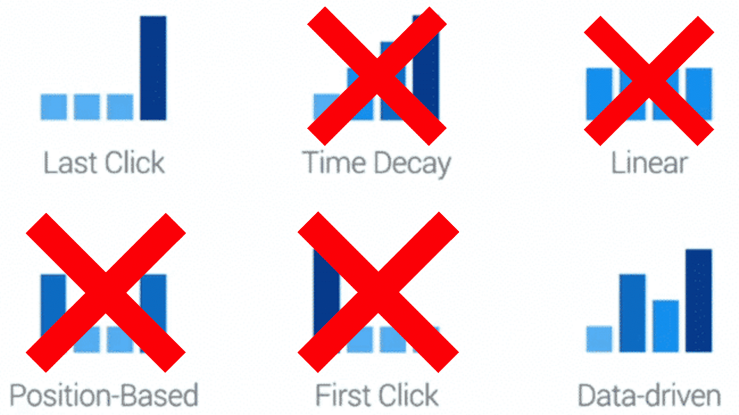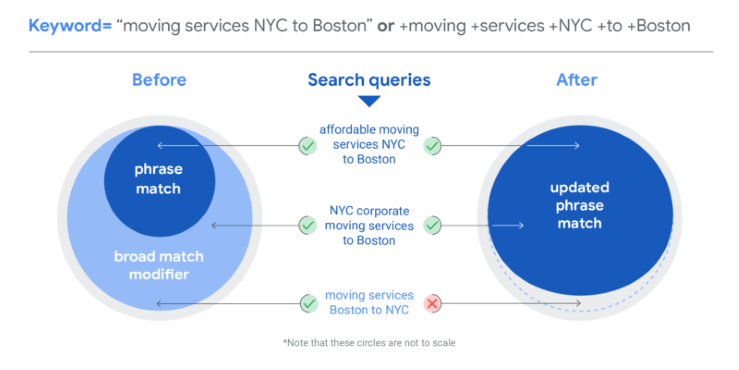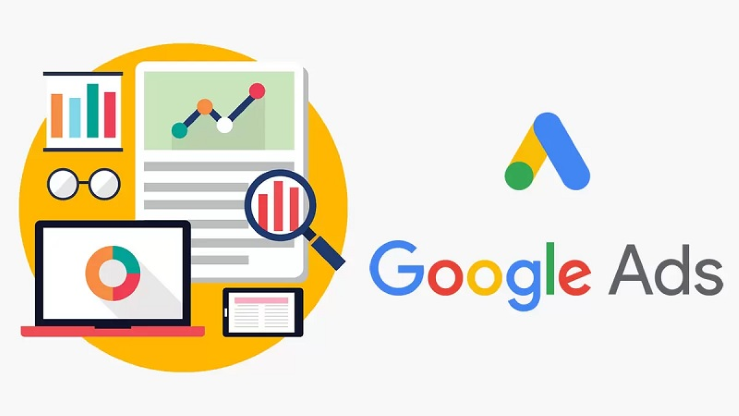Google confirms sunset details for 4 attribution models in Ads and Analytics
In a significant move towards refining advertising measurement and attribution, Google has announced the retirement of four attribution models within its Ads and Analytics platforms. This development signals a strategic shift towards more sophisticated and comprehensive attribution methodologies that provide a clearer understanding of user behavior and conversion paths. In this article, we’ll delve into the details of the attribution models slated for sunset, and explore the implications and potential benefits for advertisers.
The Attribution Models Facing Sunset
1. Last Non-Direct Click:
The Last Non-Direct Click attribution model has long been a staple in digital advertising analytics. It attributes a conversion solely to the last channel a user interacted with before converting, excluding direct traffic. This model’s simplicity has made it accessible for advertisers, but it also comes with limitations in providing a holistic view of the customer journey.
2. Last Google Ads Click:
Similar to Last Non-Direct Click, the Last Google Ads Click model attributes conversions specifically to the last click on a Google Ads ad. This model has been instrumental in understanding the direct impact of paid advertising efforts. However, as the digital landscape evolves, there is a growing recognition of the need for more nuanced attribution models that consider the entire user journey.
3. First Interaction:
The First Interaction model credits the conversion entirely to the first channel the user interacted with. While useful in identifying the initial touchpoint that led to a conversion, it offers a simplified view of attribution that may not capture the complexity of modern consumer behavior.
4. Linear:
The Linear attribution model distributes conversion credit evenly across all touchpoints in the user’s journey. While this approach acknowledges the influence of multiple touchpoints, it does not differentiate between the varying levels of impact each interaction may have had.
Implications for Advertisers
1. Shift Towards Comprehensive Attribution:
The retirement of these four attribution models indicates a broader industry trend towards embracing more comprehensive attribution methodologies. Advertisers are recognizing the need to understand the entire customer journey, from initial touchpoints to final conversions.
2. Encouraging Adoption of Advanced Models:
As Google sunsets these models, advertisers are encouraged to explore and adopt more sophisticated attribution models, such as Time Decay, Position-Based, or custom attribution models tailored to their specific business needs. These models provide a more nuanced understanding of how different touchpoints contribute to conversions.
3. Enhanced Insights and Decision-Making:
Advanced attribution models offer advertisers deeper insights into user behavior, allowing them to make more informed decisions about budget allocation, channel optimization, and content strategy. This shift ultimately empowers advertisers to maximize the effectiveness of their advertising efforts.
4. Alignment with Evolving Consumer Behavior:
Modern consumers interact with brands across a multitude of touchpoints, both online and offline. Sophisticated attribution models better reflect this complexity, providing a more accurate representation of the customer journey and the various factors that influence purchasing decisions.
5. Preparing for the Future of Digital Advertising:
As the digital advertising landscape continues to evolve, advertisers must be agile in adapting to new measurement and attribution methodologies. Embracing advanced attribution models positions advertisers to stay ahead of industry trends and capitalize on emerging opportunities.
Google’s decision to sunset four attribution models in Ads and Analytics represents a strategic move towards more advanced and comprehensive attribution methodologies. While this shift may require an adjustment period for advertisers, it ultimately reflects a commitment to providing deeper insights into user behavior and more accurate measurement of advertising effectiveness. Advertisers who embrace these changes and explore advanced attribution models are poised to thrive in the evolving landscape of digital advertising.
How to improve PPC campaign performance: A checklist
Improving PPC (Pay-Per-Click) campaign performance is essential for maximizing ROI and driving relevant traffic to your website. Here’s a comprehensive checklist to help you optimize your PPC campaigns:
1. Keyword Research and Selection:
– Conduct thorough keyword research to identify relevant and high-converting keywords.
– Use tools like Google Keyword Planner and other third-party platforms for keyword ideas.
2. Negative Keywords:
– Continuously review and update your list of negative keywords to filter out irrelevant traffic and improve ad targeting.
3. Ad Copy Optimization:
– Write compelling and relevant ad copy that aligns with the user’s search intent.
– Include unique selling points (USPs), calls to action, and relevant keywords.
4. Landing Page Relevance:
– Ensure that the landing page is directly related to the ad and provides a seamless user experience.
– Optimize the landing page for mobile devices and fast loading times.
5. Quality Score Monitoring:
– Regularly check and work on improving your ad’s Quality Score. This metric impacts ad rank and cost-per-click (CPC).
6. Ad Extensions:
– Utilize ad extensions (such as site link, callout, and call extensions) to provide additional information and encourage user engagement.
7. Ad Scheduling:
– Analyze your campaign data to identify optimal times and days for running ads. Adjust ad schedules accordingly.
8. Geo-Targeting:
– Target specific locations or exclude areas where your products or services are not relevant.
9. Device Targeting:
– Adjust bids for different devices based on performance data. Mobile devices may require specific optimization strategies.
10. Bid Strategy:
– Choose the appropriate bidding strategy based on your campaign goals (e.g., manual CPC, enhanced CPC, target ROAS).
11. Conversion Tracking:
– Set up conversion tracking to measure the effectiveness of your campaigns in terms of lead generation, sales, or other desired actions.
12. A/B Testing:
– Test different ad variations, landing pages, and calls to action to identify what resonates best with your audience.
13. Remarketing Campaigns:
– Implement remarketing campaigns to target users who have previously interacted with your website.
14. Competitor Analysis:
– Study your competitors’ ads and strategies to identify opportunities for improvement and differentiation.
15. Ad Position:
– Monitor and adjust bids to maintain a competitive ad position. Positioning can impact click-through rates (CTR) and visibility.
16. Ad Budget Management:
– Regularly review and adjust your budget allocation to ensure optimal resource utilization across campaigns.
17. Ad Copy Testing:
– Experiment with different ad copy variations to see which resonates best with your target audience.
18. Keyword Match Types:
– Use a combination of broad match, phrase match, and exact match keywords to refine targeting and control ad relevance.
19. Analytics and Reporting:
– Regularly analyze campaign performance using platforms like Google Analytics. Use data-driven insights to make informed adjustments.
20. Ad Policy Compliance:
– Ensure your ads comply with the platform’s policies to avoid penalties or disapprovals.
By following this checklist and regularly monitoring your PPC campaigns, you’ll be well-equipped to improve performance, drive quality traffic, and achieve your campaign objectives effectively.
Understanding Keyword Research and Match Types in Digital Marketing
Introduction
Keyword research is a fundamental aspect of any successful digital marketing campaign. It involves identifying and selecting specific words or phrases that potential customers might use when searching for products or services online. Match types play a crucial role in how these keywords are utilized in paid advertising campaigns. In this article, we’ll explore the significance of keyword research and delve into the various match types used in digital marketing.
I. The Importance of Keyword Research
Keyword research forms the bedrock of a successful digital marketing strategy. It allows marketers to understand the language and terminology their target audience uses when searching for products or services online. By identifying high-performing keywords, businesses can optimize their content, website, and advertising efforts to align with user intent, thereby increasing visibility and driving relevant traffic.
II. Types of Keywords
1. Short-Tail Keywords:
– Short and general search queries, usually one to three words long. They have high search volumes but may be less specific. Example: “running shoes.”
2. Long-Tail Keywords:
– Longer, more specific phrases that are typically four or more words long. They have lower search volumes but are highly targeted. Example: “best running shoes for marathons.”
3. Branded Keywords:
– Keywords containing the brand name or variations of it. Example: “Nike running shoes.”
4. Non-Branded Keywords:
– Keywords that do not contain the brand name. Example: “high-performance running shoes.”
III. Match Types in Paid Advertising
Match types dictate how closely a keyword in a paid advertising campaign must match a user’s search query for an ad to be triggered. There are four main match types:
1. Exact Match:
– Ads are triggered when the search query precisely matches the keyword. It provides the highest level of control but may have lower reach.
2. Phrase Match:
– Ads are triggered when the search query contains the keyword in the exact order, possibly with additional words before or after. It offers a balance between control and reach.
3. Broad Match:
– Ads are triggered by a wide range of variations and related searches, including synonyms, misspellings, and related terms. It provides the highest reach but may be less targeted.
4. Broad Match Modifier:
– Ads are triggered when the search query includes the modified term or close variations. It offers more control than broad matches but still allows for a wide range of related searches.
IV. Utilizing Match Types for Optimal Results
Selecting the appropriate match type depends on campaign goals and budget considerations. A balanced approach often involves a combination of match types to achieve the desired results. For instance, exact match is ideal for highly specific keywords, while broad match can be useful for discovering new, relevant search terms.
Keyword research and match types are integral components of any effective digital marketing strategy. By understanding how users search and tailoring ad campaigns accordingly, businesses can increase their online visibility and attract the right audience. A thoughtful approach to keyword selection and match type implementation can lead to higher click-through rates, improved conversion rates, and ultimately, greater success in the digital marketplace.
PPC Guide: Keyword research and match types
Creating a successful Pay-Per-Click (PPC) advertising campaign involves effective keyword research and understanding match types. Here’s a guide to help you with PPC keyword research and match types:
1. Keyword Research:
a. Start with a List:
– Begin by brainstorming a list of keywords relevant to your product, service, or business. Think about what potential customers might search for when looking for your offerings.
b. Use Keyword Research Tools:
– Utilize keyword research tools like Google Keyword Planner, SEMrush, Ahrefs, or Moz to expand your list and identify relevant keywords.
– These tools provide data on search volume, competition, and related keywords.
c. Focus on Long-Tail Keywords:
– Long-tail keywords are specific, often longer phrases that target a more niche audience.
– They can be less competitive and lead to more qualified clicks.
d. Competitive Analysis:
– Analyze competitors’ ads and keywords to discover additional keywords you might have missed.
e. Consider User Intent:
– Group keywords by user intent: informational, navigational, or transactional.
– Tailor your ad copy and landing pages to match user intent.
2. Match Types:
Match types determine how closely a user’s search query must match your chosen keywords for your ads to appear. There are typically four match types in PPC advertising:
a. Broad Match:
– Ads may appear for a wide range of related queries, including synonyms, misspellings, and variations.
– Example: If your keyword is “running shoes,” your ad might appear for “athletic footwear.”
b. Broad Match Modifier:
– Allows you to specify that certain keywords must be present in the user’s query.
– Place a plus sign (+) in front of specific keywords within your keyword phrase.
– Example: “+running +shoes” ensures both “running” and “shoes” are in the query.
c. Phrase Match:
– Ads show when the user’s query contains your keyword phrase in the specified order.
– Use quotation marks to designate a phrase match keyword.
– Example: “running shoes” triggers ads for queries like “best running shoes” but not “shoes for running.”
d. Exact Match:
– Ads display only when the user’s query exactly matches your keyword.
– Enclose the keyword in brackets [ ] to designate an exact match.
– Example: [running shoes] triggers ads only for that specific query.
e. Negative Keywords:
– Add negative keywords to exclude your ads from showing for specific terms.
– This helps you filter out irrelevant traffic and improve campaign efficiency.
3. Organize Your Keywords:
a. Group Keywords Tightly:
– Organize your keywords into ad groups with tightly related keywords.
– This allows you to create highly relevant ad copy and landing pages.
b. Write Compelling Ad Copy:
– Craft ad copy that includes the keyword and speaks to the user’s intent.
– Use ad extensions to provide additional information and encourage clicks.
c. Monitor and Adjust:
– Regularly review your campaign’s performance and adjust keyword bids, match types, and negative keywords as needed.
4. Test and Optimize:
a. A/B Testing:
– Conduct A/B tests to compare different ad variations and landing pages.
– Test headlines, ad copy, and call-to-action buttons to improve conversion rates.
b. Quality Score:
– Keep an eye on your Quality Score, which affects ad position and cost.
– Improve ad relevance, landing page experience, and expected click-through rate.
c. Budget Allocation:
– Allocate your budget based on the performance of keywords and ad groups.
– Focus more budget on keywords that drive the best results.
Effective PPC keyword research and match type selection are essential for creating cost-effective campaigns that reach the right audience. Regularly analyze data, refine your strategy, and stay up-to-date with industry trends to continually improve your PPC advertising efforts.
Can you trust website design best practices?
Website design best practices are generally reliable guidelines that are based on industry standards, user experience research, and practical experience. However, like any set of guidelines, they should be approached with a degree of critical thinking and adaptation to your specific context. Here’s a balanced perspective on trusting website design best practices:
Reasons to Trust Website Design Best Practices:
1. User-Centered Approach: Many best practices are rooted in principles of user-centered design, aiming to create websites that are intuitive, accessible, and enjoyable for users. Following these principles can result in a better user experience.
2. Proven Effectiveness: Best practices often emerge from extensive testing and research, showing that they tend to work well across a wide range of websites and industries.
3. Improved Conversions: Implementing design best practices can lead to higher conversion rates, improved engagement, and better achievement of website goals.
4. Mobile Responsiveness: As the majority of users access websites from mobile devices, design best practices often include guidelines for creating responsive designs that work seamlessly across different screen sizes.
Reasons to Approach with Caution:
1. Context Matters: Not every best practice is suitable for every website. Your website’s specific goals, target audience, industry, and unique features should be considered when deciding which practices to adopt.
2. Creativity and Innovation: While best practices offer solid foundations, innovation and differentiation can sometimes require breaking away from established norms.
3. Constant Evolution: Web design trends and user behaviors evolve over time. Some best practices may become outdated as new technologies and user preferences emerge.
4. A/B Testing: What works for one website might not work for another. Conducting A/B testing on design elements can provide insights into what resonates best with your specific audience.
Guidelines for Trusting Website Design Best Practices:
1. Start with the Basics: Begin with well-established best practices to ensure a strong foundation for your website’s design and functionality.
2. Know Your Audience: Understand your target audience’s preferences and behaviors. Tailor design choices to match their needs.
3. Adapt to Your Brand: Design should reflect your brand’s personality and values. Modify best practices to align with your brand identity.
4. Stay Updated: Continuously monitor design trends and evolving user behaviors. Be prepared to adjust your design as needed.
5. Test and Iterate: Use A/B testing and user feedback to validate the effectiveness of design choices. Iterate based on actual user interactions.
6. Collaboration: Engage designers, developers, and stakeholders in discussions about which best practices to follow and how to adapt them to your project.
Ultimately, while website design best practices provide a strong starting point, successful websites often require a balance between following these guidelines and customizing them to fit your unique objectives and audience.
Improve paid search results through routine, scheduled maintenance
Improving paid search results through routine, scheduled maintenance is crucial for maintaining the effectiveness and efficiency of your paid advertising campaigns. Here’s a comprehensive approach to achieve this:
1. Ad Campaign Review:
Keyword Analysis: Regularly review your keyword performance. Identify high-performing keywords that generate conversions and low-performing keywords that drain your budget. Consider adjusting bids, pausing underperforming keywords, or adding new relevant keywords.
Ad Copy Evaluation: Assess the performance of your ad copy. Test different variations to determine which ones yield better click-through rates (CTR) and conversions. Rotate ad copies to keep content fresh and appealing.
2. Bid Management:
Bid Adjustment: Adjust bids based on the performance of keywords, ad groups, and campaigns. Increase bids for high-converting keywords and decrease bids for those with high costs and low returns.
Device Targeting: Review the performance of your ads on different devices (desktop, mobile, tablet). Adjust bids to prioritize devices that generate the most conversions.
3. Landing Page Optimization:
Landing Page Relevance: Ensure that your landing pages align with the ad copy and keywords. A consistent user experience increases the likelihood of conversions.
Page Load Speed: Optimize landing pages for fast load times. Slow loading pages can negatively impact user experience and conversion rates.
4. Ad Extensions:
Extension Updates: Regularly update ad extensions such as site link, callout, and structured snippets. Ensure they are current and relevant to your offerings.
5. Negative Keywords:
Negative Keyword Review: Continuously monitor and update your list of negative keywords. This helps prevent your ads from showing for irrelevant searches.
6. A/B Testing:
Ad Testing: Continuously test different ad variations to understand what resonates with your audience. Test headlines, descriptions, and display URLs.
7. Conversion Tracking and Analytics:
Conversion Tracking Setup: Ensure conversion tracking is correctly set up. Regularly verify that conversions are being tracked accurately.
Analytics Review: Analyze data from Google Analytics or your preferred analytics tool to gain insights into user behavior, identify bottlenecks, and optimize your campaign strategy.
8. Budget Management:
Budget Allocation: Review your budget distribution among campaigns and ad groups. Allocate more budget to high-performing campaigns while adjusting lower-performing ones.
9. Competitor Analysis:
Competitor Monitoring: Monitor competitor ad strategies. Adjust your bidding and ad copy accordingly to maintain competitiveness.
10. Ad Schedule Review:
Ad Schedule Performance: Analyze performance data by time of day and day of week. Adjust ad scheduling to focus on peak performance periods.
11. Regular Reporting:
Performance Reports: Create regular reports to track key metrics such as CTR, conversion rate, cost per conversion, and return on ad spend (ROAS).
12. Compliance and Policy Review:
Ad Policies: Regularly review ad policies to ensure your ads comply with platform guidelines. This helps avoid disruptions to your campaigns.
By implementing these routine maintenance steps, you can continuously refine and optimize your paid search campaigns, ensuring they remain effective, efficient, and aligned with your business goals.
Writing Ad Copy That Converts – April 30 Webcast
In the ever-competitive landscape of digital marketing, the art of crafting ad copy that converts is pivotal for businesses aiming to captivate their audience and achieve tangible results. The “Writing Ad Copy That Converts” webcast held on April 30 was a deep dive into the strategies, techniques, and insights behind effective ad copywriting. This essay delves into the key takeaways from the webcast, exploring the nuances of creating ad copy that not only engages but also converts.
Understanding the Power of Ad Copy
1. The Ad Copy Conundrum: Ad copy serves as the gateway between brands and their audience, influencing user perceptions and actions.
2. Conversion-Centric Approach: Effective ad copy isn’t just about creativity; it’s about driving desired actions, such as clicks, sign-ups, or purchases.
3. Psychology of Persuasion: Ad copy leverages psychological triggers to compel users to take action, tapping into emotions, needs, and desires.
Insights from the April 30 Webcast
1. Segmented Targeting: Ad copy’s effectiveness hinges on understanding the target audience’s preferences, pain points, and motivations.
2. Value Proposition: Clearly articulating the unique value that the product or service offers is crucial for enticing users.
3. Compelling Headlines: A captivating headline grabs attention instantly, making users eager to learn more about what’s offered.
4. User-Centric Language: Addressing the audience directly using second-person pronouns fosters a sense of connection.
Crafting Ad Copy that Converts: Techniques and Strategies
1. Clarity and Simplicity: Clear, concise ad copy communicates the message effectively and reduces friction in understanding.
2. Emotionally Charged Language: Tapping into emotions resonates with users, creating a memorable and impactful connection.
3. Benefits Over Features: Highlighting how the product or service benefits the user is more compelling than merely listing features.
4. Creating Urgency: Employing time-sensitive language or limited-time offers motivates users to take immediate action.
5. Social Proof: Including testimonials, reviews, or statistics builds trust and enhances the credibility of the ad copy.
Testing and Iteration: The Key to Improvement
1. A/B Testing: Regularly testing different ad copy variations helps identify what resonates most with the audience.
2. Performance Analytics: Analyzing performance metrics such as click-through rates and conversion rates provides insights for optimization.
3. Iterative Process: Ad copywriting is an ongoing journey of refinement and enhancement based on real-time feedback.
Striking a Balance: Creativity and Conversion
1. Art Meets Science: Crafting ad copy is a harmonious fusion of creativity and data-driven strategies for maximum impact.
2. Measure and Adapt: Balancing creativity with conversion-focused techniques requires measuring results and adapting accordingly.
The “Writing Ad Copy That Converts” webcast on April 30 was a treasure trove of insights into the art and science of ad copywriting. Crafting compelling ad copy that resonates with the audience while driving conversions requires a multifaceted approach, combining psychology, targeting, value proposition, and testing. By embracing the strategies and techniques discussed, businesses can bridge the gap between captivating storytelling and measurable outcomes. As digital marketing evolves, the ability to create ad copy that not only engages but also converts remains an essential skill for marketers aiming to thrive in the ever-evolving landscape.
Giving Yourself a Grade in Google Ads
In the ever-evolving landscape of digital marketing, Google Ads (formerly known as AdWords) serves as a powerful tool for businesses to reach their target audiences and achieve marketing goals. Measuring the success of a Google Ads campaign is essential, and giving yourself a grade in Google Ads involves assessing various key performance indicators (KPIs) to determine the effectiveness of your efforts. This essay delves into the process of evaluating your Google Ads performance and assigning yourself a grade based on the results.
Understanding Google Ads Performance Metrics
1. Click-Through Rate (CTR): CTR measures the ratio of clicks to impressions, indicating the percentage of users who click on your ad after viewing it.
2. Conversion Rate: Conversion rate reveals the proportion of users who complete a desired action, such as making a purchase or filling out a form, after clicking on your ad.
3. Quality Score: Quality Score reflects the relevance and quality of your ad and landing page, influencing ad position and cost-per-click (CPC).
4. Cost-Per-Click (CPC): CPC indicates the amount you pay for each click on your ad. A lower CPC often signifies efficient spending.
5. Return on Investment (ROI): ROI measures the profitability of your campaign by comparing the revenue generated to the cost of running the campaign.
6. Ad Position: Ad position reveals where your ad appears on the search results page. Higher positions tend to garner more clicks.
Evaluating Your Performance
1. Set Clear Objectives: Define your campaign objectives, whether it’s driving traffic, generating leads, or increasing sales.
2. Benchmark Against Goals: Compare your campaign’s actual performance against the goals you set initially.
3. Analyze Click and Conversion Data: Examine your CTR, conversion rate, and other engagement metrics to gauge user response to your ads.
4. Review Quality Scores: A high Quality Score indicates that your ads are relevant to users’ searches and are likely to rank higher.
5. Assess Cost Efficiency: Review your CPC and ROI to understand the cost-effectiveness of your campaign.
Assigning Yourself a Grade
1. A: Exceptional Performance: If your campaign surpasses all KPIs and achieves exceptional results, you deserve an ‘A.’
2. B: Above Average Performance: If you achieve most of your goals and your campaign performs well, but there’s room for improvement, consider a ‘B.’
3. C: Satisfactory Performance: A ‘C’ grade indicates that your campaign meets the minimum requirements but lacks significant impact.
4. D: Below Average Performance: If your campaign falls short on several KPIs and improvements are needed, a ‘D’ may be appropriate.
5. F: Poor Performance: An ‘F’ grade indicates that your campaign underperformed across the board and requires a major overhaul.
Taking Action Based on Grades
1. Leverage Successes: Analyze what worked well for your top-performing campaigns and replicate those strategies.
2. Address Weaknesses: Identify areas where your campaign underperformed and implement targeted improvements.
3. Test and Iterate: Experiment with different ad formats, targeting options, and messaging to optimize your campaign’s performance.
Giving yourself a grade in Google Ads is a strategic approach to objectively assess the success of your campaigns. By evaluating performance metrics, setting clear goals, and aligning your efforts with your objectives, you can gauge your effectiveness in reaching your target audience and achieving desired outcomes. The process of assigning yourself a grade not only helps you acknowledge your successes but also guides your path toward continuous improvement in the dynamic realm of digital marketing.
Why Pay Per Click Is Such A Beautiful Tool For SEO?
Pay-Per-Click (PPC) advertising and Search Engine Optimization (SEO) are two distinct digital marketing strategies, each with its own benefits and advantages. While they serve different purposes, they can complement each other and contribute to a comprehensive online marketing strategy. Here’s why PPC can be considered a valuable tool for enhancing SEO efforts:
- Immediate Visibility: PPC campaigns allow you to quickly gain visibility on search engine results pages (SERPs) for targeted keywords. This can be especially useful if your website is new or if you’re targeting competitive keywords that might take time to rank for organically through SEO.
- Keyword Research: PPC campaigns provide insights into which keywords are driving clicks and conversions. This data can inform your SEO strategy by helping you identify high-performing keywords to target in your content optimization efforts.
- Testing and Optimization: PPC ads enable you to test different ad copy, landing pages, and calls to action. The insights gained from these tests can be applied to your SEO strategy to optimize on-page content and improve user engagement.
- Targeting Specific Audiences: PPC allows you to target specific demographics, locations, devices, and even the time of day your ads are displayed. This targeting information can provide insights into which audiences are most interested in your offerings, aiding your SEO efforts to tailor content for these audiences.
- Enhancing Click-Through Rates (CTR): By analyzing the ad copy and elements that lead to high CTR in your PPC campaigns, you can apply similar strategies to your meta titles and descriptions in organic search results to improve click-through rates.
- Seasonal and Promotional Campaigns: PPC is flexible, allowing you to quickly create and run campaigns for special occasions, promotions, or seasonal events. This agility can help you capture traffic during specific periods, which can also indirectly benefit your overall website’s visibility and user engagement.
- Testing Landing Page Performance: The landing pages you use for PPC campaigns can also be used to test how well they convert users. The insights gained from these tests can guide your SEO strategy by helping you create more effective and engaging landing pages.
- Brand Visibility: A combined PPC and SEO strategy can provide double exposure on SERPs. When your website appears both as a paid ad and in the organic results for the same keyword, it increases brand visibility and credibility.
- Data Insights: The data gathered from PPC campaigns, such as user behavior, conversion rates, and keyword performance, can inform your broader digital marketing strategy, including SEO efforts.
- Budget Control: PPC allows you to set a budget and pay only for actual clicks. This control over spending can be valuable, especially when compared to the unpredictable timeline and resource investment associated with SEO efforts.
While PPC and SEO have distinct benefits, integrating them strategically can lead to a more holistic approach to digital marketing. It’s important to consider your specific goals, target audience, and resources when determining how to best leverage these two powerful tools.
How to glean insights from impression share to boost PPC performance
Impression share is an important metric to consider when measuring the performance of your PPC campaigns. Impression share helps marketers understand how visible their ads are in search engine results, and how much of the available traffic they are capturing, while also serving as an important indicator for understanding advertisers’ competitiveness in auctions. It can be used to help marketers diagnose and identify opportunities for improvement, from optimizing bids to adding targeting audience segments and refining ad creative and messaging for greater visibility. The metric is calculated by dividing the impressions an ad receives for a given Keyword or Ad Group by the estimated number of impressions that it could have received, based on current criteria, such as budget, ad rank, and targeting settings. This calculation determines both absolute impression share—the actual number of impressions received—as well as eligible impression share. One of the best ways to glean insights from impression share is to analyze the differences between absolute and eligible impression share. High absolute impression share—reaching close to 100 percent—means that your campaign is reaching as much of the target audience as possible and is performing well.
On the other hand, a low absolute impression share indicates that your campaign is not receiving enough impressions, which can signify that you need to adjust your bids, budget, audience segments, or other targeting settings. By analyzing the differences between absolute and eligible impression share, you can quickly identify any areas of your campaign that need adjustment. For instance, if you have a low absolute impression share, but a high eligible impression share, this means your ads are eligible to appear in more searches than they are currently, and you may need to increase your max CPC bids or budget to drive more traffic. On the other hand, a high absolute impression share and a low eligible impression share indicate that your targeting parameters are too narrow and you should consider broadening targeting criteria (i.e. expanding your audience segment or including more relevant keywords) to increase reach and visibility. By monitoring impression share on a regular basis, marketers can gain insights into their campaign’s visibility and better understand what changes need to be made to their bids, budget, audience, and targeting. This in turn can help marketers maximize budget and improve performance.












